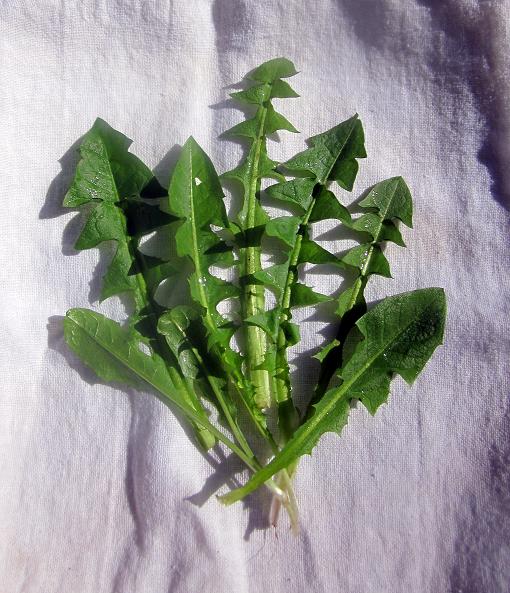 Dandelions are everywhere, right now.
Dandelions are everywhere, right now.
They’re in your backyard, along ditches and footpaths, flash-mobbing soccer fields, sneaking through cracks in the sidewalk and fighting to overtake golf courses. They are the hardiest (most say would say “insidious”) of vegetation, able to resurface again and again in the most unbelievably anti-green environments our concrete and Astroturf-loving human brains can conceive. They resist toxic assault and uprooting with ease. They are a symbol of everything gardeners hate: The uncontrollable factor riddling even the most minutely-controlled landscaping project. Just Google the word “Danedlion” and the first result you get will be “Kill dandelions dead!”
They have become the enemy, the plague, the weed… But before you get out the pitchforks and lawn-napalm, there might be something else we can do with these offenders. Our ancestors knew this plant very well, not as a weed, but as a source of food ‘n medicine… Yeah, dandelions are completely edible. It blew my mind as well!
What You will need to forage Dandelions
- A Bag – That’s pretty much it.
Got your bag? Great! Come with me. The secret, as I have learned it, is that different parts of the dandelion are best eaten during different seasons. The big poofy yellow florets that everybody’s seen littering the park in June? Best eat that in June. The taproots should be left to mature a bit longer before being skinned, roasted and made into a diuretic tea. The leaves should be harvested in early spring, so right now, before they develop a stalk and pour all their sweet, sweet energy into making a flower.
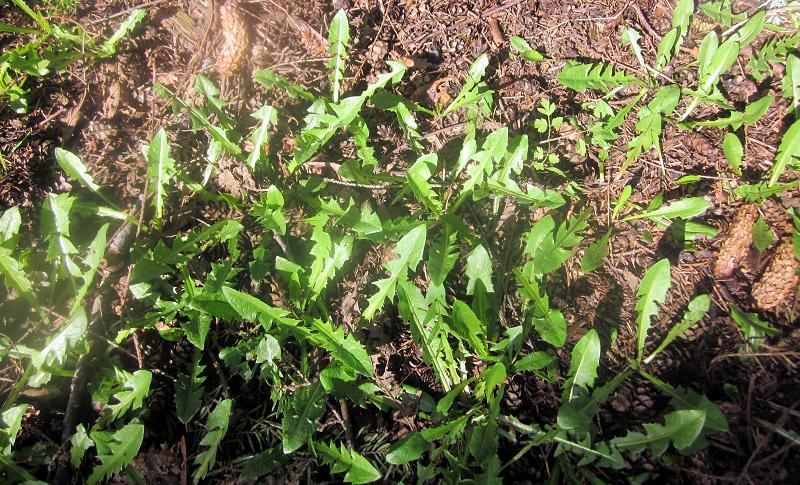 The young dandelion plants are just getting big enough to be seen above the grass line, or poking out of the piles of composting leaves left over after our wet winter. I had trouble picturing these plants without their trademark yellow flowers, but it’s pretty easy to spot ‘em. Here, get down here with me and have a look…
The young dandelion plants are just getting big enough to be seen above the grass line, or poking out of the piles of composting leaves left over after our wet winter. I had trouble picturing these plants without their trademark yellow flowers, but it’s pretty easy to spot ‘em. Here, get down here with me and have a look…
There! See! The shape is unmistakeable!
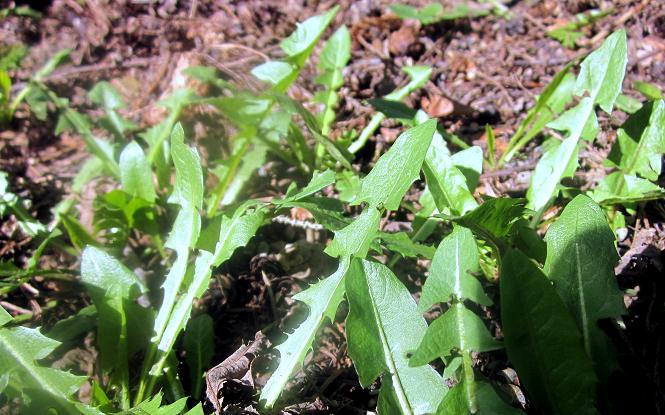 The English name Dandelion comes to us from the medieval French dent de lion (tooth of the lion) which is a reference to the sharp, jagged edges of the plant’s leaves. These form a messy rosette around the developing flower stalk and extend out in all directions. Dandelion’s leaves are completely smooth and bright “Spring is here!” green. Sometimes you’ll come across one or two with a midvein that is slightly reddish in colour, which will develop more as the leaves get bigger.
The English name Dandelion comes to us from the medieval French dent de lion (tooth of the lion) which is a reference to the sharp, jagged edges of the plant’s leaves. These form a messy rosette around the developing flower stalk and extend out in all directions. Dandelion’s leaves are completely smooth and bright “Spring is here!” green. Sometimes you’ll come across one or two with a midvein that is slightly reddish in colour, which will develop more as the leaves get bigger.

Pic from wallpaper-million
The size of each rosette will vary, as will the length of the leaves and even the spaces in-between the teeth on each leaf. It’s entirely possible for no two bunches to look alike and this always makes a novice forager like me pause. No worries. You won’t be poisoning yourself or your family ‘cause there isn’t anything out there that looks all that similar. Both Cat’s Ear and Hawksweed (the two weeds most easily confused with dandelions) have fine hairs protruding from their leaves. Just to re-iterate, dandelions are completely smooth.
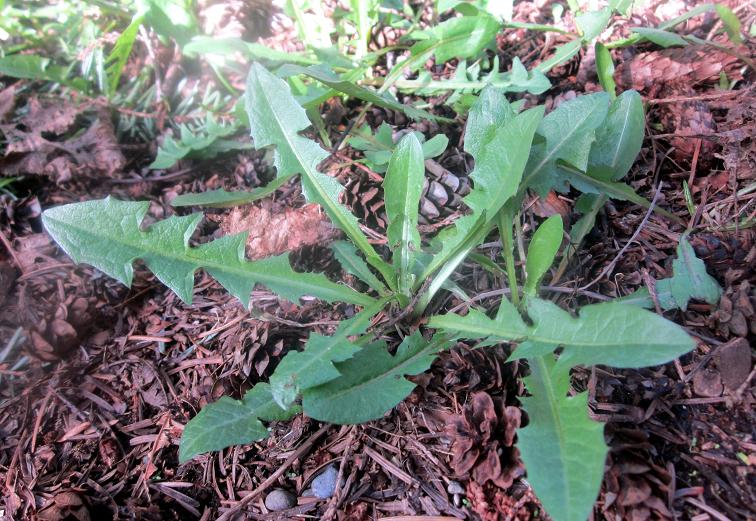 What you really need to watch out for is where your dandelions have made their home. I’ve already mentioned a couple places where these weeds congregate and you may have noticed their common trait. Dandelions thrive in chaos and recently overturned soil and cluster particularly tightly alongside any man-made structures. These places provide benefits for the dandelions, but for us foragers they represent a number of potential dangers.
What you really need to watch out for is where your dandelions have made their home. I’ve already mentioned a couple places where these weeds congregate and you may have noticed their common trait. Dandelions thrive in chaos and recently overturned soil and cluster particularly tightly alongside any man-made structures. These places provide benefits for the dandelions, but for us foragers they represent a number of potential dangers.
Any dandelions growing beside roads, railway tracks, municipal buildings, highway overpasses, in ditches and anywhere else you might suspect that city trucks drive by and spray with weed killer is off the menu. That stuff will mess you up. Besides, those weeds are covered in road grit and cigarette ash anyway.
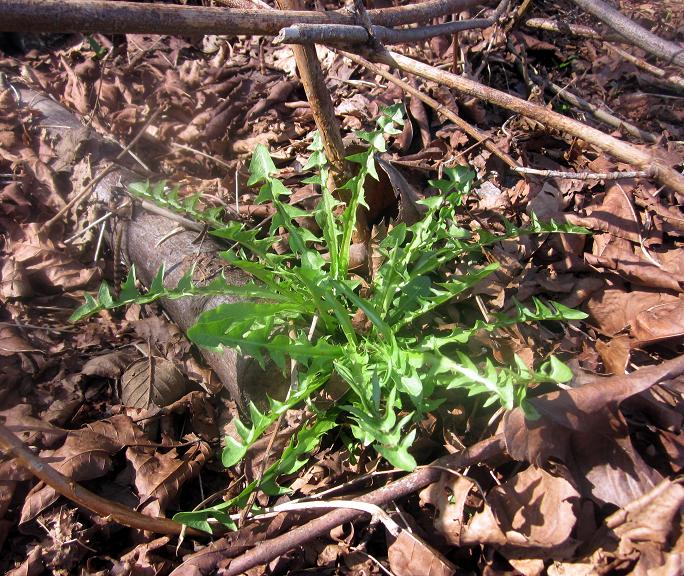 The more out-of-the-way setting you can find ‘em in, the better. Get out there and take your pet for a walk!
The more out-of-the-way setting you can find ‘em in, the better. Get out there and take your pet for a walk!
Now, watch where your dog (or cat, or possum, lobster, whatever you keep as a pet) goes to the washroom. If you are on a footpath I’ll bet you a case of Steamworks Pilsner that your pet doesn’t stray more than two feet from either edge of the path to do his/her business. That two to three feet zone is another place you want to avoid picking your dandelions. Go off road and look for weeds hiding in places that would be hard for small-to-medium-sized mammals to get into. Also, the harder and more uneven the terrain, the more likely a hiker hasn’t stopped to relieve themselves there. *laughs*
Brambles and dandelions are good friends and if you find a nasty little clutch of ‘em, check underneath and you might find some weeds that are sure to be pee-free. Two months ago there was a big windstorm ‘round these parts and a lot of big tree branches are still littering the green belt. These, along with all the brambles formed a chaotic kind of tent system for young dandelions that (as far as I saw) kept most pets and pests away.
Once you’ve found a nice, clean, bug-free bunch you can either pull up the whole thing to get the leaves and the roots (look for larger bunches to get better roots) or just snip off whatever leaves look the best. The leaves will either re-grow or pour more of the plant’s energy into making an attractive (and edible!) flower. I got my bag full from under a row of downed branches ten or so feet off of the trail. The leaves were firm and unblemished and smelled like chicory and grass clippings.
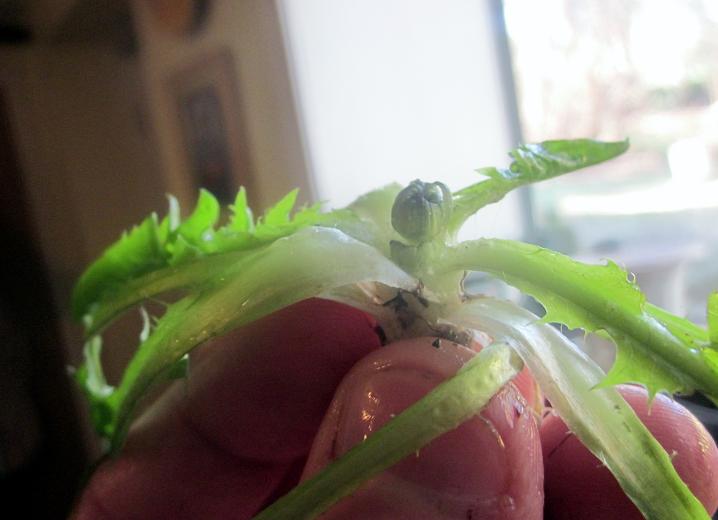
When I got home I removed the roots and flower buds, rinsed the leaves in a bowl with cold running water and drained ‘em well on a dishcloth. Even after a thorough cleansing I still found the odd pine needle or piece of dirt packed into a leaf’s midvein.
The rule of thumb with dandelion leaves is the larger the leaf, the more mature and therefore bitter in taste it will be. This time of year it’s just the little guys out there, and their flavour is nice and mild. Still, it’s a really wild, green taste. Think arugula with hints of raw asparagus and chicory. The trademark early-spring bitterness only comes in at the end, lingering on the tongue for a second to slap you around and say “Hey! I ‘aint some store-bought, bagged salad green!”
Dandelion leaves are great raw, tossed with a light vinaigrette, alongside fruit or soft cheeses, folded into omelettes, steamed, stir-fried, ground into a pesto and anything else you can think of to do with arugula or spinach. Dandelion’s bitterness is nicely matched with fat, either in the form of oils, butter, or a nice pork pairing. Cheeses especially take the edge off, and make a great off-white canvas to splash some vibrant spring greens on. Fruit also plays well with these weeds, as I learned last summer when I tossed some dandelions up with grilled peaches for a light, summer antipasto.
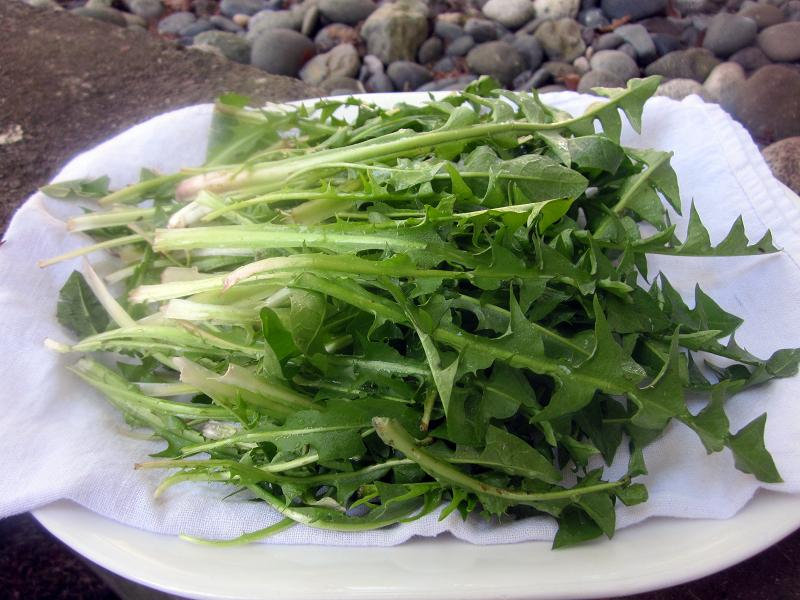 It was a trip to learn that you could eat these much maligned plants and I hope more people get out there in this nice (well, nicer that last month) weather and give ‘em a go as well. Ralph Waldo Emerson was probably imagining a dandelion when he wrote, “What is a weed? A plant whose virtues have not yet been discovered.”
It was a trip to learn that you could eat these much maligned plants and I hope more people get out there in this nice (well, nicer that last month) weather and give ‘em a go as well. Ralph Waldo Emerson was probably imagining a dandelion when he wrote, “What is a weed? A plant whose virtues have not yet been discovered.”
I’ll finish with a handful of my favourite names for dandelion in other languages that I scooped off of Wikipedia. Some of them are priceless:
- German – pusteblume (blowing flower)
- Modern French – pisse au lit (piss the bed)
- Persian – qasedak (little postman… Wha?)
- Swedish – maskros (worm Rose)
- And my favourite, Chinese – pú gōng yīng (flower that grows in public spaces by the riverside)